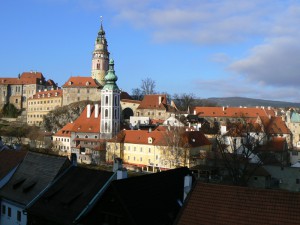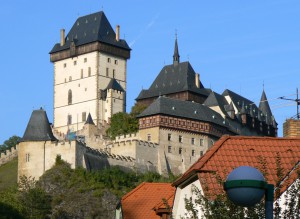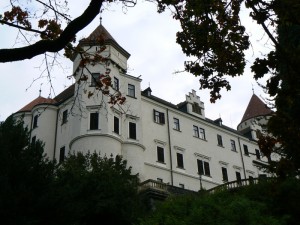Kutna Hora
Following a one hour ride by airconditioned minibus through the beautiful Bohemian countryside, we reach the stunning town of Kutná Hora, a UNESCO World Cultural Heritage Site which gained excessive wealth thanks to its prosperous silver mines and became the second most important town in the Kingdom of Bohemia, after Prague.
Český Krumlov
Český Krumlov is situated on the banks of the meandering Vltava River in South Bohemia; the town was built around a 13th-century castle with Gothic, Renaissance and Baroque elements. It is an outstanding example of a small central European medieval town whose architectural heritage has remained intact thanks to its peaceful evolution over more than five centuries.
Karlovy Vary
Karlovy Vary is the most famous Czech spa situated about 120 km west of Prague near to German border. It dates back to 14th century founded by the Czech King and Roman Emperor Charles IV. The 12 hot springs of Karlovy Vary spread its fame all over Europe. The spring waters are used to treat all kinds of disorders and for general well-being.
Karlštejn Castle
Karlštejn Castle is a high Gothic castle founded in 1348 by Czech King and Roman Emperor Charles IV. as a place for safekeeping of the royal treasures, especially Charles\'s collection of holy relics and the coronation jewels of the Roman Empire. Located about 30 km southwest of Prague in Karlštejn Village it is among the most famous and visited castles in Czech Republic.
Konopištĕ Castle
The origins of Konopištĕ Castle are wrapped in a shroud of mystery. It may have happened in a time following a period of anarchy and unrest that a Gothic citadel was built. Since 14th century it has gone through countless architectural changes. It was Archduke Ferdinand d’Este, the Heir of Hapsburg throne that gave Konopištĕ its last makeover.
Sychrov Castle
In the place of Sychrov a small Baroque castle was erected in 17.century. During of next two centuries the ownership of the Castle turned to several noble families. In 1820 Sychrov was bought by the family of Rohan, French aristocrats exiled by the French Revolution. The vast reconstructions they provided changed the outworn Baroque castle into what we see today.






